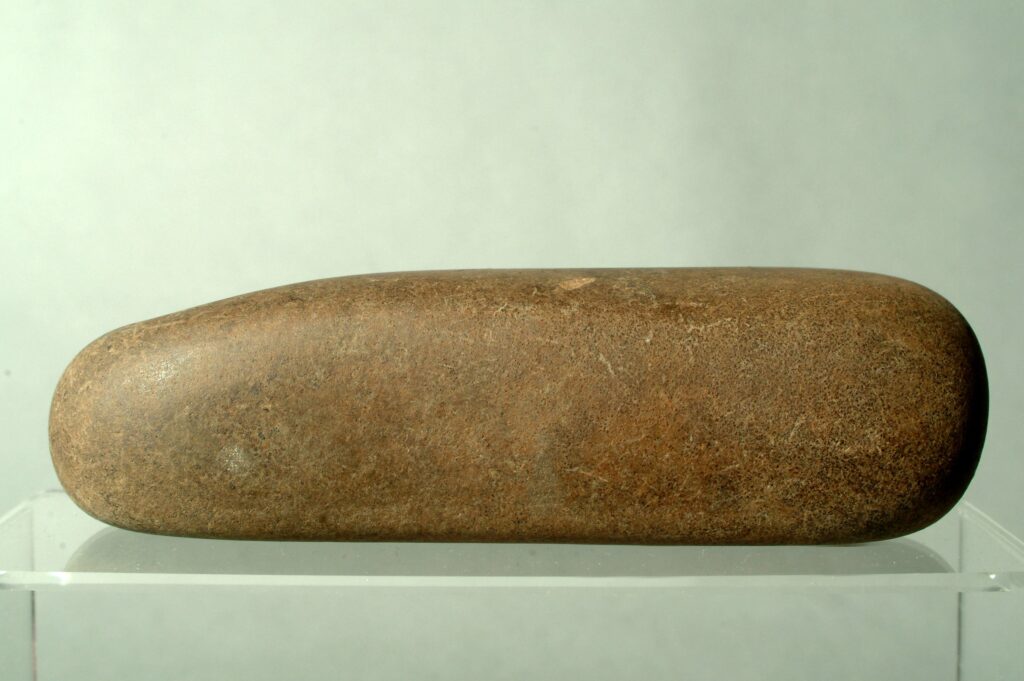Explore
Pebble
Pebble, elongated and regular, long and rectangular in shape with an almost square profile, one end is flat and square while the other is tapered and rounded

Hammerstone, flat rounded pebble which widens at one end and on one side where the stone is broken and chipped, used all round but particularly at both long ends
This item was found by chance along with 13 others by archaeologist Shane Delaney while walking in the Doolin area during the summer of 2000. All the items were surface finds and were found on disturbed ground. The disturbance was due to the removal of field walls and the subsequent mounding of the wall rubble into mounds.
The field system pattern in the area has been significantly altered since the turn of the century as evidence from the SMR map for the area (Sheet 8 and 8a). The field walls that have been removed are not marked on the revised 6 inch O.S. maps from 1913-1918, so they must be later. The access road to the area is also a twentieth century structure, as it is not feature on the SMR.
The area where the artefacts were found is marked as an archaeological complex (SMR CL008-057). This encompasses a number of enclosures and a cashel and possible ancient field systems.
The soil of the area is formed on limestone bedrock and is characterised best by the karst landscape of the Burren. The topsoil depth is very shallow and the protruding limestone bedrock is a major feature of the topography. The depth of disturbed topsoil is no more than a couple of centimetres in general.
Collection: National Monuments (Amendment) Act, 1994
Category: Tool/Implement